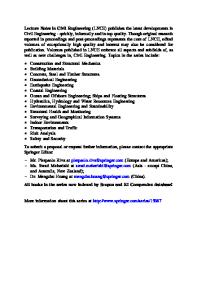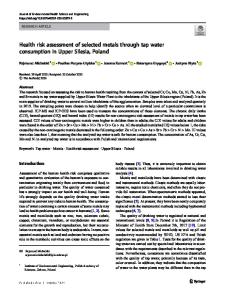Metals Distribution, Histopathological Alterations, and Health Risk Assessment in Different Tissues of Fish ( Ctenophary
- PDF / 7,960,139 Bytes
- 23 Pages / 595.276 x 790.866 pts Page_size
- 11 Downloads / 387 Views
Metals Distribution, Histopathological Alterations, and Health Risk Assessment in Different Tissues of Fish (Ctenopharyngodon idella) Nazish Shah 1,2
&
Muhammad Khisroon 2 & Said Sajjad Ali Shah 3
Received: 24 April 2020 / Accepted: 2 September 2020 # Springer Science+Business Media, LLC, part of Springer Nature 2020
Abstract Grass carps were exposed to the established lethal concentration (LC) values of copper (Cu), chromium (Cr), and lead (Pb) each for the exposed period of 24, 48, 72, and 96 h respectively. Concentrations of these metals were determined in the brain, liver, muscles, gills, kidneys, and intestinal tissues of exposed and control fish through the atomic absorption spectrophotometer after the wet digestion process. The metals accumulation inside these tissues confirmed the absorption of metals from media into the tissues of the model organism. The accumulated concentration in fish tissues was confirmed to be concentration-dependent with significant (p < 0.05) elevated mean values seen for the lead followed by chromium and copper as compared with the mean concentration values of their respective control group. Levels of metals were found above the permissible standards suggested by the regulatory authorities in the fish’s body. Histological sections of the same targeted organs exposed to the three exposure concentration groups were studied and compared with the sections of the healthy group. The histopathological lesions were scored to rank the deleterious effects of metals. The histopathological changes were recorded in concentration and progressive time-related series where gills had the greatest number of scored lesions followed by the kidneys and intestines, muscles, brain, and finally the liver as the least affected organ. Moreover, the organs were not affected uniformly by the metals; in fact, every studied organ has given mild to severe responses towards the toxic metals where lead had proven to cause more severe lesions as compared with copper and chromium. The histological lesions recorded mostly were thus concentration-dependent as revealed in the bioaccumulation of these metals with the effects ranked as lead > chromium > copper with a few exceptions. The findings can be used as a benchmark for the evaluation of the fate and effects of the toxic metals in the expanded aquaculture production of grass carp nationwide. Further investigations with respect to other potentially toxic metals like arsenic, mercury, and cadmium could address the problem towards additional studies. Keywords Bioaccumulation . Histopathology . Grass carp . Tissue . Copper . Chromium . Lead
Introduction Bioaccumulation is a process of chemical uptake by organisms either through food intake containing the chemicals or by Electronic supplementary material The online version of this article (https://doi.org/10.1007/s12011-020-02373-8) contains supplementary material, which is available to authorized users. * Nazish Shah [email protected] 1
Department of Zoology, University of Swabi, Anbar Campus, Swabi, Khyber P
Data Loading...











